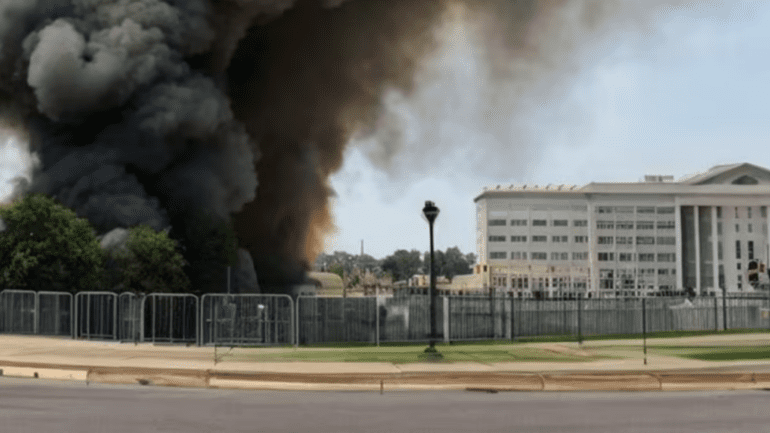TL;DR:
- A manipulated photo of an explosion near the Pentagon went viral on social media.
- The image briefly caused a drop in US stocks before it was revealed to be a hoax.
- The fake photo originated on Facebook and spread on Twitter, reaching millions of followers.
- The Pentagon and Arlington Police confirmed there were no incidents near the Pentagon.
- Speculation arose that the image was generated by artificial intelligence.
- Twitter accounts responsible for spreading the photo deleted their posts or issued corrections.
- Concerns grew about the role of AI in spreading misinformation.
- Facebook labeled the account that shared the fake photo as “false information” and blocked access to the post.
Main AI News:
A manipulated image depicting a supposed explosion near the Pentagon gained significant traction on social media platforms yesterday, causing a temporary dip in US stocks. This incident marks a potential turning point, as it may be the first time an AI-generated picture has influenced the financial market.
Around 10 a.m. Eastern Time, when the fabricated photo started circulating, the S&P 500 experienced a brief 0.3% decline, hitting a session low. However, as reports emerged exposing the image as a hoax, the index swiftly rebounded.
The falsified photograph initially surfaced on Facebook, capturing attention with its portrayal of a massive smoke plume near the US military headquarters in Virginia. It quickly spread across Twitter, garnering millions of views from accounts such as the Russian state-controlled news network RT and the financial news site ZeroHedge, which recently joined Twitter’s verification system, Twitter Blue.
Contrary to the alarming image, a Pentagon duty officer informed Bloomberg via email that no incidents were reported that morning. Additionally, the Arlington Police Department reassured the public via Twitter, stating, “There is NO explosion or incident taking place at or near the Pentagon reservation, and there is no immediate danger or hazards to the public.”
Prior to official refutations from credible sources, astute observers speculated that AI technology might have generated the image. Nick Waters, a researcher at Bellingcat, an open-source intelligence group, mentioned the lack of corroborating evidence: “Check out the frontage of the building, and the way the fence melds into the crowd barriers… There’s also no other images, videos, or people posting as first-hand witnesses,” he tweeted.
As more information surfaced, Twitter accounts responsible for propagating the image began deleting their posts or issuing corrections. RT and ZeroHedge removed their tweets featuring the fake photo, with ZeroHedge acknowledging its falsity. Furthermore, the Twitter account “Bloomberg Feed,” along with another account named “Walter Bloomberg,” which carried the report, was suspended, as they are unrelated to Bloomberg News.
The origins of the manipulated image remain unclear, but concerns surrounding the role of AI in generating and disseminating misinformation have deepened. The ease with which emerging technologies enable the creation of deceptive visual content raises fears about the rapid spread of falsehoods.
On Facebook, the account that initially shared the fake photo, along with other costs associated with the QAnon conspiracy group, had a “false information” label appended to their original post. Facebook swiftly blocked access to the post, emphasizing that independent fact-checkers had verified the image as false.
Conlcusion:
The dissemination of a manipulated image depicting a fictional Pentagon blast and its subsequent impact on the stock market highlights the vulnerability of financial markets to the rapid spread of misinformation. This incident underscores the need for heightened vigilance in assessing the credibility of information shared on social media platforms. Additionally, the emergence of AI-generated content adds a new layer of complexity to the challenge of maintaining market stability and investor confidence. Market participants should be cautious and rely on verified sources to mitigate the potentially disruptive effects caused by false information in the future.

